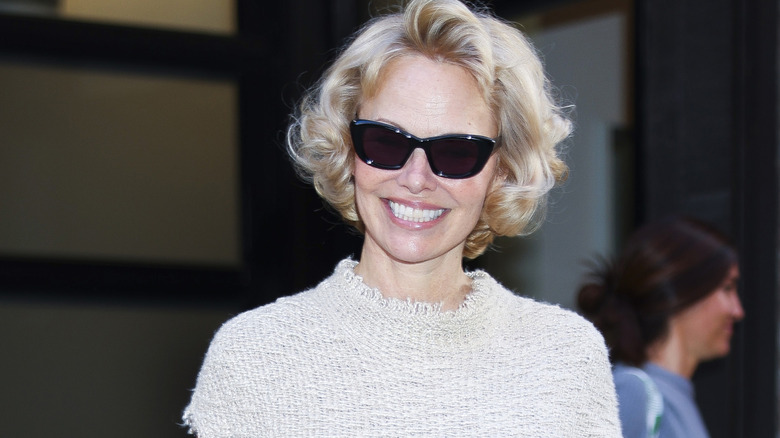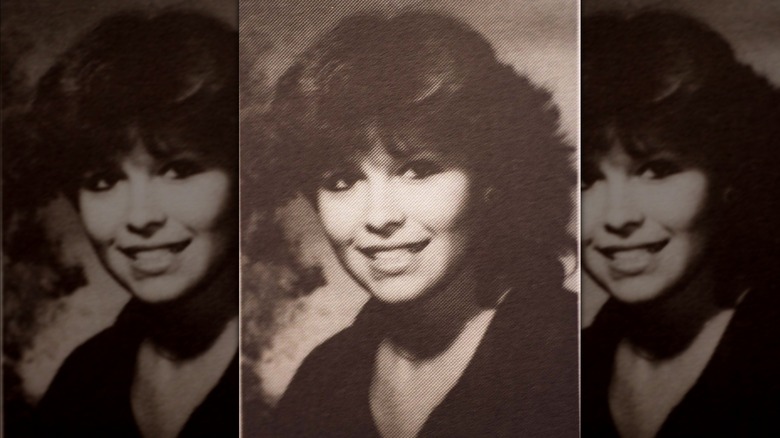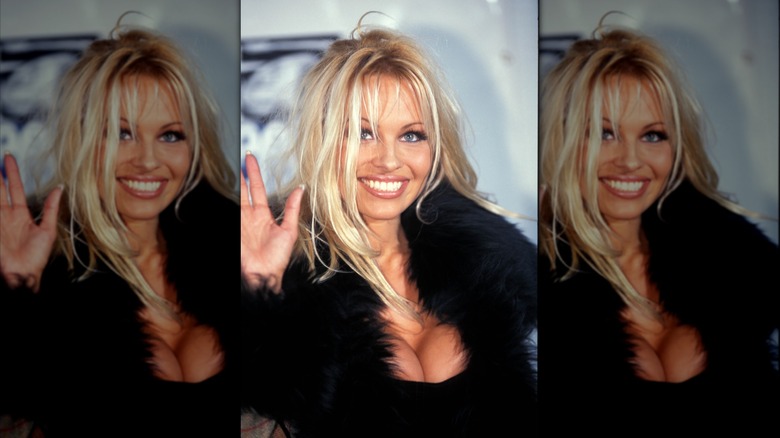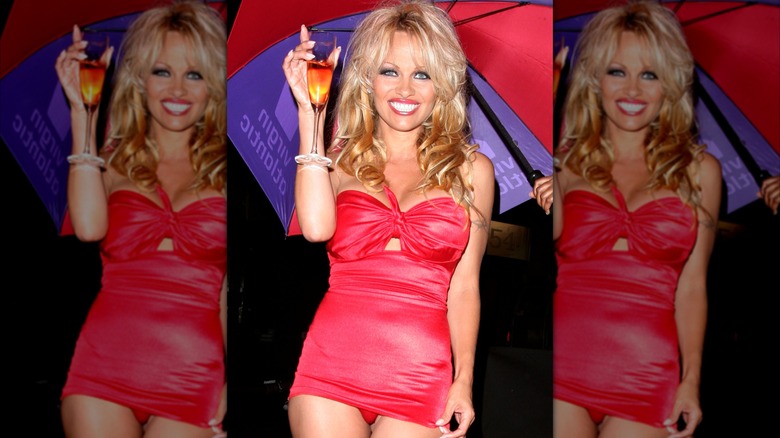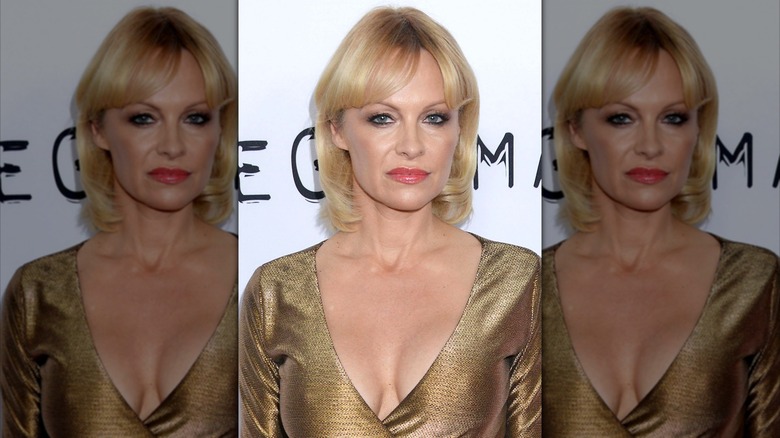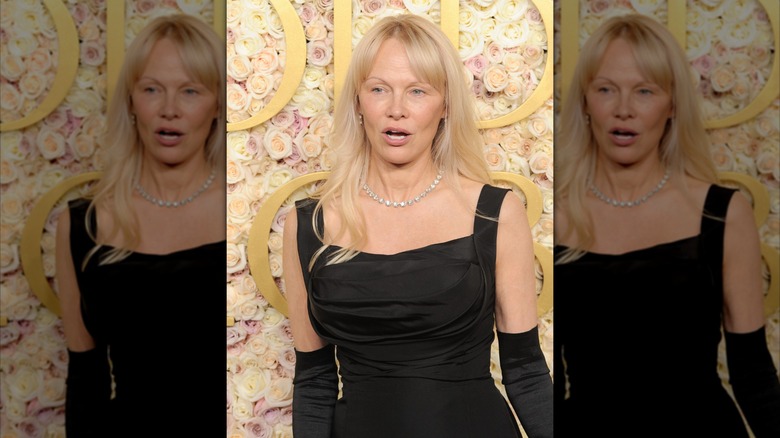Pamela Anderson's Makeup Transformation Through The Years Confirms Her Icon Status
Once upon a moodboard, Pamela Anderson walked into photoshoots to be transformed -– into Marilyn Monroe, into Brigitte Bardot, into someone else's fantasy. A blond formulaically constructed in eyeliner and lip liner, mascara thick as tabloid ink. That period — the Baywatch summers, the Playboy covers, the VHS-gloss of pre-millennium sex appeal — filtered other blond bombshells through the bombastic glamour of the '80s and '90s, sharpened by the male gaze, and lacquered into something more synthetic and extreme.
This transformation made Anderson famous. Now, however, she walks into photoshoots, and "they show me 10 pictures of me," the meta-muse told Elle. In the full-circle irony of iconography, the moodboard has folded in on itself. The collage of borrowed archetypes has become the blueprint, the reference has become the source. Today, it resurfaces on social media feeds under the banner of #Pamcore: perfectly imperfect updos, glossy lips, and busty dresses. The deeper irony, of course, is that just as a new generation meticulously deconstructs her old looks, Anderson has walked away from it all. The glamour, once part of her pin-up apparatus, has been shrugged off with indifference.
"I'm not trying to be the prettiest girl in the room," she told Vogue. At Paris Fashion Week 2024, she arrived bare-faced, sans glam team, her presence uncomplicated. Still, our fixation persists. We continue to study her image whilst she drifts calmly beyond its reach. In stepping away from the version of herself the culture insists on referencing, she has only deepened it. Her transformation keeps confirming her icon status. And, as ever, she's slightly ahead of the curve.
1985 gave us the raw material
Pamela Anderson told Glamour magazine, "I realized as a very young child, I was playing roles my whole life." In 1985, at age 17, the role in question was small-town student, volleyball player, girl-next-door with a far-off look in her eye.
In her Highland Secondary yearbook portrait, she wore barely a trace of makeup. Her brows are full, her brunette hair softly feathered. There is maybe a touch of lip product and a sweep of blush, but the pizzazz is still years away.
She had become the fantasy by 1990
By 1990, any residual traces of naturalism had been thoroughly replaced by a look engineered for a specific cultural framework. Anderson had appeared on her first Playboy cover the year before and was named Playmate of the Month in February.
Here, Anderson's face had been totally rendered in the grammar of Playboy's house style. Her platinum hair fell in unruly waves, designed to look glamorously spontaneous but clearly arranged for effect. The makeup was anything but subtle. Her eyes were outlined in a thick band of black. Mascara hardened the lashes stiff, and the brows plucked into narrow arches (a questionable classic among '90s beauty trends).
Her lips were overlined and glossed. The skin, bronzed and evenly lit, gave her an almost airbrushed ideal. This look would endure as a glyph of the time's mass-mediated femininity. We would see its purest expressions in Anderson's performances on "Baywatch" and in "Barb Wire."
The 2000s saw heightened makeup
A decade on, the bombshell had received its millennium-era remaster of the familiar fantasy. Pictured here at Duvet in Manhattan in 2005, she offered the same exaggerated silhouette, just refracted through the aesthetics of early reality television and red carpet maximalism. If the '90s face was built for magazine covers, the 2005 version felt made for flash photography and bottle service.
Her beauty look pulled no punches. Her eyes were glazed in a dark metallic shadow, diffused outward in a heavy, deliberate haze. Gone were the muted brown lipsticks of the '90s, traded as they were for a saccharine pink that became emblematic of Y2K decadence. The brow du jour was untouched by shifting trends, and they remained as they had always been on Pammy: still thin, still arched, and still suspended high above the lid.
A new edit came in the 2010s
The 2010s introduced a different iteration of Pamela Anderson. Her once-peroxide waves had mellowed into a cooler champagne blonde, cut into a chic bob with understated mid-century echoes. It raised the question: was she shifting her reference point from sex symbol to screen siren?
The makeup told a similar story. Her complexion looked luminous, and felt more refreshed than the high-gloss days of her youth. She'd also learned how to fill out sparse brows, as hers had relaxed just a tad from their severe state.
This was a transitional phase for Anderson. The overt symbols of her Baywatch years had been pulled back. The dial on her full glam had been turned down — deliberately, presciently, and little rebelliously — at a time when beauty was accelerating in the opposite direction, with contour kits, strobing tutorials, and the rise of the Instagram face. Stripping things back as the rest of us were still baking to cringeworthy oblivion, and for perhaps the first time, the gaze felt less performative.
As of 2025, Pamela Anderson is in her no-makeup era
Pamela Anderson's latest evolution — the no-makeup age of the 2020s — seems her most personal. The 2025 Golden Globes was one of her most striking examples. After the death of her longtime makeup artist, Alexis Vogel, from breast cancer, she stepped away from cosmetics entirely. "She was the best," Anderson told Elle, "and since then, I just felt, without Alexis, it's just better for me not to wear makeup."
In so doing, Anderson joins a growing cohort of older celebs that aren't playing by society's beauty rules. "I feel rooted for. I feel good. I'm in a good place," she said of her decision. And for that, she remains an icon.
